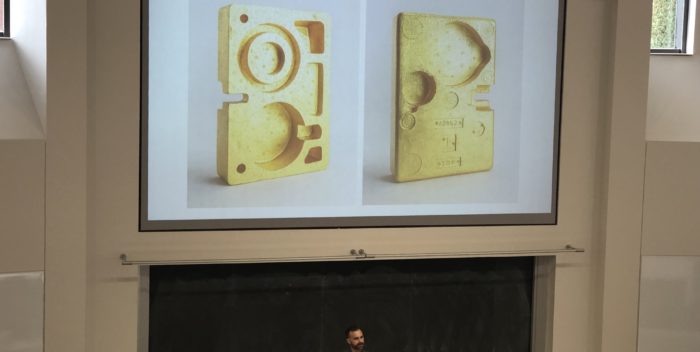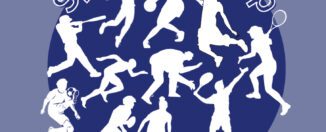Guest Speaker Presents Connection Between Art and Science
By Janis Wagner
Science and art majors came together Friday, Sept. 27 to hear artist Mark Dineen speak about how his work crosses science into art. Dineen is an assistant professor of art and art history at Colorado State University.
Dineen takes materials that society uses on a day-to-day basis and uses them in ways for which they were not originally intended, creating sculptures and other mediums. He also uses experimental research techniques in order to bridge the gap between using the material and knowing the history behind the material.
He focuses on how the movement of materials affects the way people live their lives, taking products with little importance and covering them in materials which hold historical value, such as bronze.
One of the pieces he showed featured used cardboard that created a pot and was covered in bronze to symbolize the integration of history with the present. The bronze was from old historic metals that were melted down.
Dineen also works with agricultural methods. His most recent project included five rectangles dug out of the ground by his university students which were then filled with concrete. This technique captured the way the layers of the ground had been formed over past years and the landscape that was now present.
Dineen said his work was inspired by working with different materials throughout his life, particularly with tools and factory objects.
“I really appreciated how he brought in moments from his past,” sophomore Sarah Armbrust said. “It’s cool to see how they have affected his aesthetics and the way he views his own art.”
Dineen works through the idea of increased stability equaling increased field for experimentation, a common research technique used to create positive environments during lab work.
“(My art) feels a lot like I’m dodging bullets, but that’s why I try to play it safe,” Dineen said. “I recognize that even though I like to work solo, learning how to build community through working in an unstable environment helps me to test what does work and what doesn’t.”
A few of his exhibits have featured more than the art community, with scientists of different branches such as geology or chemistry coming to view his work.
“We are a liberal arts university, so drawing from main ideas in art and applying them to outside work is important because you are physically able to see how science can overlap and the two are interconnected, even if we may usually tend to separate them,” Assistant Professor of Art Justin Groth said.













